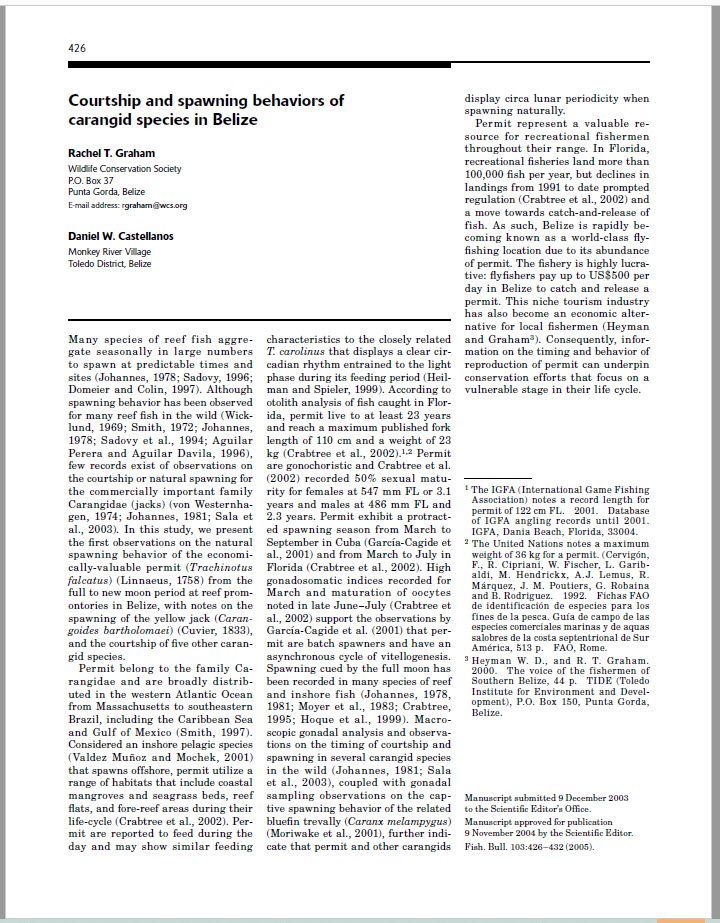During 10 dive surveys (15 diving hours) at Turneffe Elbow, we observed a large school of 250 to 500 permit aggregating on the reef promontory (Table 1). The aggregated fish slowly swam into the south current along the south-facing sloping fore-reef shelf at 5−15 m depth and the steep drop-off located at ~30 – 35 m. The school streamed down to the spur and groove for- mations at about 20 m depth on the reef shelf and rose up into the upper water column again. Permit were loosely grouped and displayed little fear of divers, a behavior commonly observed among a range of other fish species that aggregate to spawn (Graham, 2003). Several individuals displayed a dark patch located above and behind the pectoral fin on both flanks. Permit dis- played this same behavior coloration change during each encounter.
Rachel T. Graham, Daniel W. Castellanos

